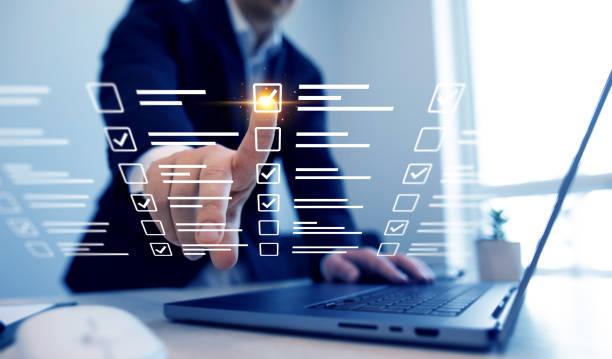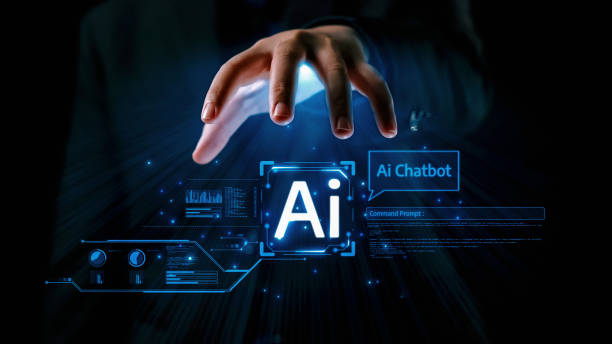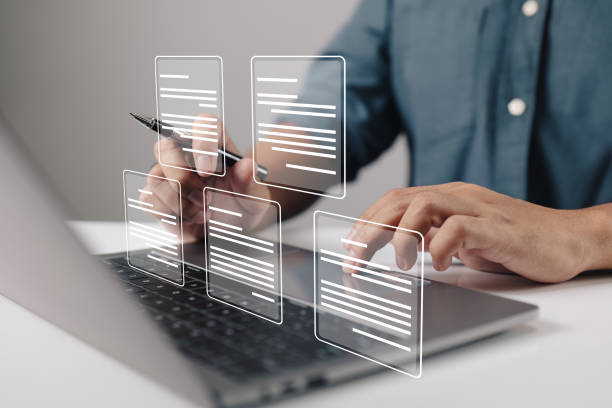What is On-Page SEO and why is it important?
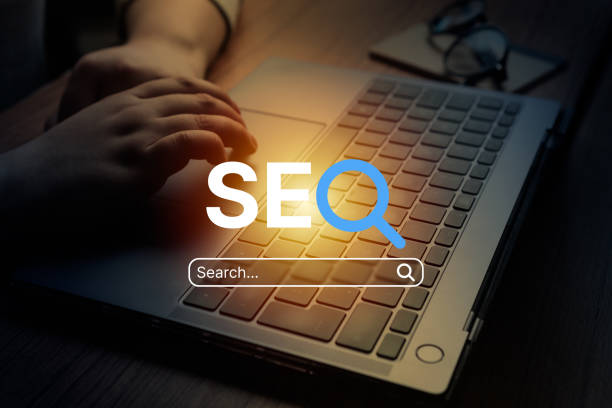
What is On-Page SEO and why is it important?
#On_Page_SEO, which is also known as On-Page SEO, is a set of techniques and optimizations performed directly within your website to improve your site’s ranking in search engine results like Google.
These optimizations include content optimization, HTML tags (title, meta description, headings), URL structure, images, and site speed.
The importance of On-Page SEO stems from the fact that it helps search engines better understand your site’s content and recognize its value to users.
In other words, SEO (On-Page) creates a common language between your website and search engines, causing your site to rank higher in search results and attract more organic traffic.
In summary, On-Page SEO helps you to:
- Improve your position in search results.
- Attract more organic traffic to your website.
- Provide a better user experience for your visitors.
By performing On-Page SEO correctly, you are essentially showing search engines that your website is valuable to users and answers their questions and needs.
On-Page SEO not only improves your ranking but also converts more visitors into customers.
Is your company’s website performing as well as your brand deserves? In today’s competitive world, your website is your most important online tool. Rasaweb, specialists in professional corporate website design, helps you to:
✅ Gain customer credibility and trust
✅ Convert website visitors into customers
⚡ Get a free consultation!
Keyword Research and its Role in On-Page SEO
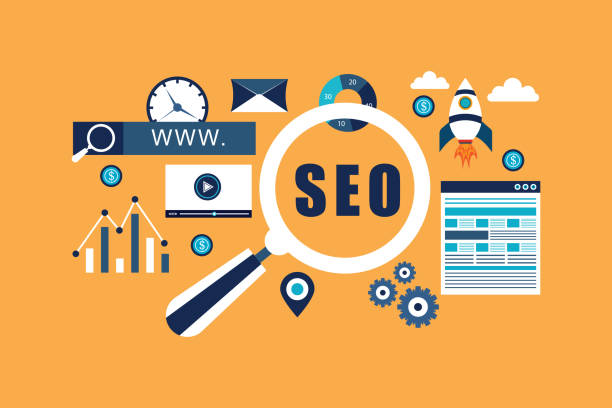
Keyword Research and its Role in On-Page SEO
#Keyword_Research is one of the most important steps in On-Page SEO.
This process involves identifying the words and phrases that users use to search for information related to your business in search engines.
The goal of keyword research is to find keywords that are both relevant to your website’s content and have a high search volume.
This helps you to optimize your content around these keywords and, consequently, improve your ranking in search results.
Various tools are available for keyword research, including Ahrefs, Moz Keyword Explorer, and Google Keyword Planner.
When selecting keywords, pay attention to the following points:
- Relevance: Keywords should be directly related to your website’s content.
- Search Volume: Keywords should have an acceptable search volume to attract more organic traffic.
- Competition: Choose keywords with less competition to have a better chance of ranking in search results.
After finding suitable keywords, you should strategically use them in your website’s content.
This includes using keywords in page titles, meta descriptions, headings, main body text, and image alt tags.
However, be careful not to overuse keywords, as this can lead to your website being penalized by search engines.
The main goal of On-Page SEO is for your website’s content to be valuable and informative for users, not just for search engines.
Optimizing Titles and Meta Descriptions
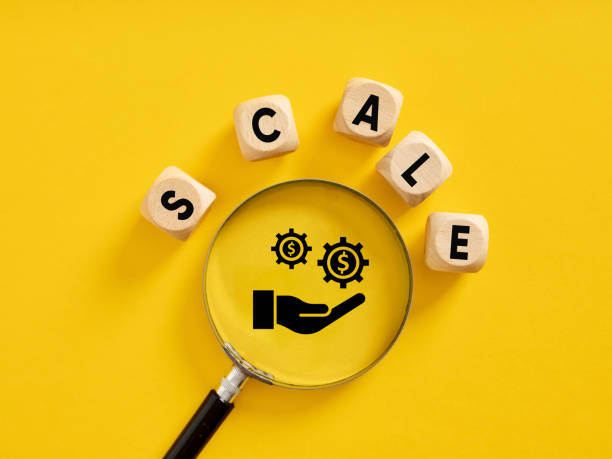
Optimizing Titles and Meta Descriptions
Titles and meta descriptions are two very important elements in On-Page SEO that are displayed in search results.
The page title is the clickable title that users see in search results, and the meta description is a short summary of the page’s content displayed below the title.
Optimizing these two elements helps you attract user attention and encourage them to click on your website’s link.
To optimize page titles, pay attention to the following points:
- The title should be concise, attractive, and relevant to the page’s content.
- Use primary keywords in the title.
- The title length should not exceed 60 characters.
To optimize meta descriptions, pay attention to the following points:
- The meta description should be an accurate and attractive summary of the page’s content.
- Use primary keywords in the meta description.
- The meta description length should not exceed 160 characters.
- Use Call to Action words such as “Read More” or “Shop Now”.
Also, note that Google may change meta descriptions based on the user’s search.
However, optimizing meta descriptions is still important because it helps Google better understand your page’s content.
On-Page SEO is a continuous and dynamic process.
| Element | Optimal Length | Key Tips |
|---|---|---|
| Page Title | Less than 60 characters | Includes keywords, attractive, relevant |
| Meta Description | Less than 160 characters | Accurate summary, includes keywords, Call to Action |
Optimizing Headings (H1, H2, H3, etc.)

Optimizing Headings (H1, H2, H3, etc.)
Headings play an important role in organizing your website’s content and help search engines understand the structure and main topic of your pages.
Proper use of headings not only improves user experience but also aids On-Page SEO.
The H1 tag is usually used for the main title of the page and should include the page’s primary keyword.
H2 to H6 tags are used for subheadings and should have a logical and hierarchical structure.
Important tips for optimizing headings:
- Use the H1 tag only once per page.
- Use primary and relevant keywords in headings.
- Headings should have a logical and hierarchical structure (H1 > H2 > H3, etc.).
- Use headings to break content into smaller, more digestible sections.
- Avoid excessive use of keywords in headings.
In summary, headings act as guides to your content and help users and search engines quickly understand the main topic of the page.
On-Page SEO means optimizing the user experience in line with search engine requirements.
Tired of losing business opportunities due to not having a professional corporate website? Don’t worry anymore! With Rasaweb’s corporate website design services:
✅ Your brand’s credibility and professionalism will increase.
✅ You will attract more customers and sales leads.
⚡ Get a free consultation now to start!
Optimizing URL Structure and Its Importance
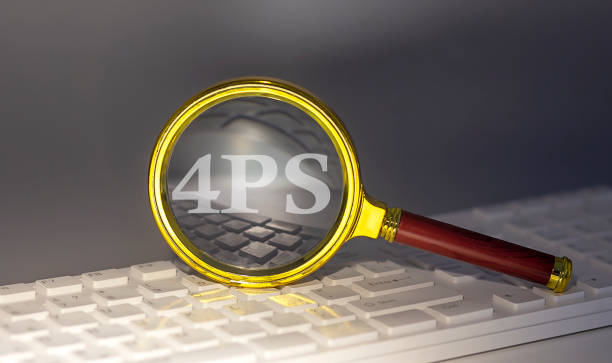
Optimizing URL Structure and Its Importance
Your website’s URL structure plays an important role in On-Page SEO and user experience.
Optimized URLs are readable, concise, and contain relevant keywords.
A good URL helps users and search engines quickly understand the page’s topic and easily navigate your website.
Important tips for URL optimization:
- Use short and descriptive URLs.
- Use primary keywords in the URL.
- Use hyphens (-) instead of underscores (_) to separate words.
- Use lowercase letters in the URL.
- Avoid using special and unnecessary characters in the URL.
- The URL structure should be logical and hierarchical.
For example, instead of using a URL like `example.com/page?id=123`, use a more optimized URL like `example.com/blog/seo-internal-guide`.
This URL shows users and search engines that the page is about an internal SEO guide and is located in the blog section.
URL optimization is an important aspect of On-Page SEO that should not be overlooked.
Optimizing Images for SEO
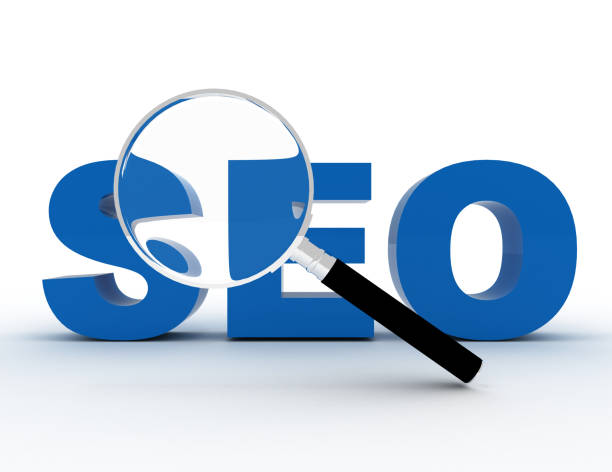
Optimizing Images for SEO
Images play an important role in the attractiveness and user interaction with your website.
However, if images are not properly optimized, they can negatively impact your website’s loading speed and harm your On-Page SEO.
Image optimization includes reducing image file size, using descriptive alt tags, and choosing the appropriate format for images.
Important tips for image optimization:
- Reduce File Size: Use image compression tools to reduce image file size without sacrificing quality.
- Alt Tag: Use descriptive alt tags to describe images.
Alt tags help search engines understand the content of images and get a better ranking in image search results. - File Name: Use descriptive filenames that include relevant keywords for images.
- Image Format: Use the appropriate format for images.
JPEG format is suitable for images with many colors, and PNG format is suitable for images with text and graphics. - Image Dimensions: Upload images in appropriate dimensions for display on your website.
Avoid uploading large images and resizing them in the browser.
By optimizing images, you can improve your website’s loading speed, enhance user experience, and strengthen your On-Page SEO.
Use alt tags correctly to describe photos.
The Importance of Site Loading Speed and Its Optimization

The Importance of Site Loading Speed and Its Optimization
Website loading speed is one of the important factors in On-Page SEO and user experience.
Users who wait for a slow website to load are likely to leave and go to a faster website.
Search engines also consider website loading speed as a ranking factor and place faster websites higher in search results.
There are various methods for optimizing website loading speed, including:
- Image Optimization: Optimize images correctly (reduce file size, use alt tags, and select the appropriate format).
- File Compression: Compress HTML, CSS, and JavaScript files.
- Using Caching: Use a caching system to store a version of your website in users’ browsers.
- Choosing Suitable Hosting: Use a reputable and fast hosting company.
- Code Optimization: Optimize your HTML, CSS, and JavaScript code.
- Using a CDN: Use a Content Delivery Network (CDN) to distribute your website’s content across various servers worldwide.
By optimizing website loading speed, you can reduce the Bounce Rate, improve user experience, and strengthen your On-Page SEO.
| Factor | Importance | Description |
|---|---|---|
| Image Optimization | High | Reduce size, use alt tag |
| File Compression | Medium | Compress HTML, CSS, JS |
| Using Caching | High | Store website version in browser |
| Choosing Suitable Hosting | High | Fast and reputable hosting |
Quality and Valuable Content: The Secret to Success in On-Page SEO

Quality and Valuable Content: The Secret to Success in On-Page SEO
Content is king! This phrase is very famous in the world of SEO and means that quality and valuable content is one of the most important factors in On-Page SEO.
Search engines are looking for websites that provide useful, informative, and relevant content to user needs.
By producing quality content, you can improve your website’s ranking in search results, attract more organic traffic, and increase your credibility in your industry.
Characteristics of quality content:
- Uniqueness: Content must be unique and original, avoid copying others’ content.
- Value: Content must be valuable and useful to users, answering their questions and needs.
- Relevance: Content must be relevant to your website’s topic and target keywords.
- Readability: Content must be readable and understandable, use short sentences and organized paragraphs.
- Up-to-date: Content must be up-to-date and provide new and accurate information.
By producing quality and valuable content, you can attract the attention of search engines and users and achieve success in On-Page SEO.
Help your site get seen by producing unique content.
Are you annoyed by losing customers who visited your site to buy?
Rasaweb is your specialized solution for a successful online store.
✅ Significantly increase your online sales
✅ Build professional trust and branding with customers⚡ Get a free consultation from Rasaweb experts!
The Importance of Internal Linking and How to Do It
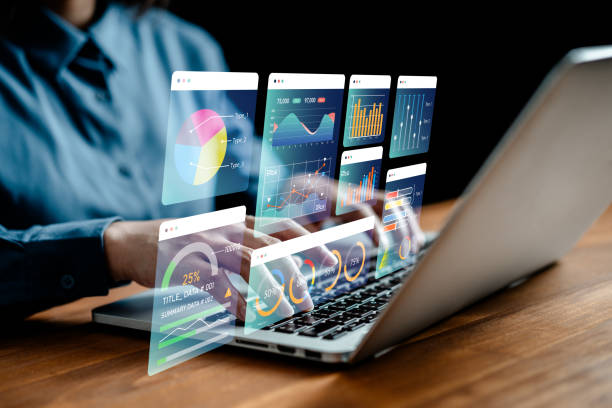
The Importance of Internal Linking and How to Do It
Internal linking refers to the process of creating links between different pages of your website.
Internal linking helps search engines better understand your website’s structure, identify more important pages, and distribute link value among different pages.
Also, internal linking helps users easily navigate your website and find the information they need.
On-Page SEO also needs internal linking.
Important tips for internal linking:
- Relevance: Links should be relevant to the content of the source and destination pages.
- Anchor Text: Use descriptive anchor text that includes relevant keywords for links.
- Number of Links: Use an appropriate number of links on each page.
Avoid excessive linking. - Important Pages: Link to your website’s more important pages to improve their ranking in search results.
- New Pages: Link to new pages you create so search engines can identify them faster.
By correctly performing internal linking, you can improve your website’s structure, enhance user experience, and strengthen your On-Page SEO.
Reviewing and Analyzing Results and Continuous Improvement of On-Page SEO

Reviewing and Analyzing Results and Continuous Improvement of On-Page SEO
On-Page SEO is a continuous process and requires reviewing and analyzing results and continuous improvement.
After performing On-Page SEO optimizations, you should regularly review your results and make necessary changes as needed.
Various tools are available for reviewing and analyzing SEO results, including Google Search Console and Google Analytics.
The most important metrics to review:
- Keyword Ranking: Check your website’s ranking for target keywords.
- Organic Traffic: Check the amount of organic traffic to your website.
- Bounce Rate: Check your website’s bounce rate.
- Time on Site: Check the average time users spend on your website.
- Conversion Rate: Check your website’s conversion rate (the percentage of users who complete a specific action, such as purchasing a product or subscribing to a newsletter).
By reviewing and analyzing these metrics, you can identify the strengths and weaknesses of your On-Page SEO and make necessary changes as needed.
Remember that SEO is an ongoing process and requires effort and perseverance.
Frequently Asked Questions
| Row | Question | Answer |
|---|---|---|
| 1 | What is On-Page SEO? | On-Page SEO refers to a set of actions performed within the website (on its pages) to improve the site’s ranking in search engine results. This includes optimizing content, site structure, and HTML codes. |
| 2 | Why is On-Page SEO important? | On-Page SEO helps search engines better understand the page’s content and determine if it is relevant and valuable for user searches. This better understanding leads to higher rankings. |
| 3 | What is the first and most important step in On-Page SEO? | Keyword Research is the most important initial step. By finding appropriate keywords, targeted content relevant to user needs can be produced. |
| 4 | What is the role of the Title Tag in On-Page SEO? | The Title Tag is one of the most important ranking factors and should include the main keyword. This tag is displayed as the page title in search results and affects the Click-Through Rate (CTR). |
| 5 | What is the importance of Meta Description? | Meta Description does not directly affect ranking, but by providing an attractive summary of the page content in search results, it can encourage users to click, thereby increasing the Click-Through Rate (CTR). |
| 6 | Why is the use of Headings (H1, H2, etc.) important in content? | Headings help structure content and improve readability for users and search engine crawlers. Using keywords in headings also helps search engines better understand the topic. |
| 7 | What does Image Optimization in On-Page SEO include? | It includes compressing images to reduce size, using descriptive and relevant filenames, and filling the Alt tag (alternative text) with relevant keywords to help search engines understand the image content. |
| 8 | What is Internal Linking in On-Page SEO? | Internal linking refers to creating links between different pages of a website. This helps distribute page authority (Link Equity), improve user experience, and assist search engine crawlers in discovering new pages. |
| 9 | Why is Page Speed important for On-Page SEO? | Page speed is a direct ranking factor and significantly impacts user experience. Slow pages can lead to an increased Bounce Rate and reduced user engagement. |
| 10 | What role does quality content play in On-Page SEO? | Quality, comprehensive, unique, and valuable content for the user, is the core of On-Page SEO. This content not only attracts and retains users but also sends positive signals to search engines and helps achieve better rankings. |
And other services of Rasa Web advertising agency in the field of advertising
Smart Digital Advertising: A novel service to increase click-through rates through optimizing key pages.
Smart Social Media: A combination of creativity and technology for digital branding through precise audience targeting.
Smart UI/UX: An effective tool to increase site visits with the help of marketing automation.
Smart Social Media: A combination of creativity and technology for campaign management through attractive user interface design.
Smart Advertising Campaign: A professional solution for digital branding with a focus on intelligent data analysis.
And over hundreds of other services in internet advertising, advertising consultation, and organizational solutions
Internet Advertising | Advertising Strategy | Advertorials
References
On-Page SEO Training at Seorooz
Advanced On-Page SEO – Ahmad Fahri
Complete Guide to On-Page SEO in the New Year on Virgool
On-Page SEO Checklist – Seokaran
? With Rasaweb Afarin, a leading digital marketing agency, build the future of your online business today. We pave your path to success by providing creative and specialized solutions, including multi-language website design, SEO, and targeted social media management. Trust us to shine in the digital world.
📍 Tehran, Mirdamad Street, next to Bank Markazi, Kazeroun Jonoubi Alley, Ramin Alley, No. 6

